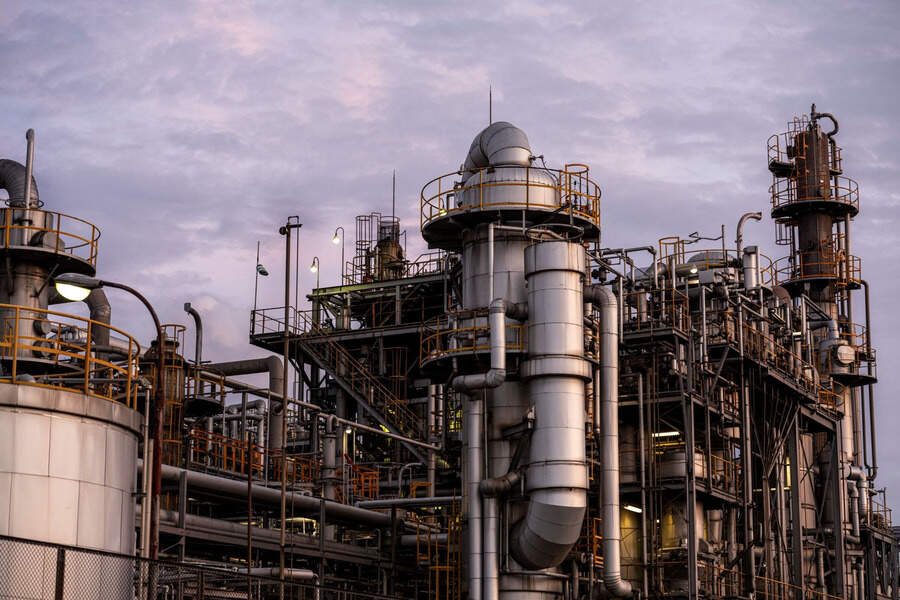A Coal Handling Plant is the part of a thermal power plant where coal is received, stored, crushed, and sent to the boiler for burning.
Think of it like a kitchen where coal is the main ingredient. Before it can be “cooked” (burned in the boiler), it needs to be cleaned, cut, measured, and delivered properly.
Why Do Thermal Power Plants Need Coal Handling Plants?
Coal doesn't arrive at power plants ready to use. It comes in big, dirty lumps that may contain rocks, metal, and moisture. If we try to burn this directly in the boiler, it can cause:
-
Poor burning efficiency
-
Blockage or damage to equipment
-
More pollution
-
Fire or explosion risks
That’s why coal handling plants are built—to prepare the coal properly before it reaches the furnace.
Steps in Coal Handling Process
Let’s take a simple, step-by-step look at how coal travels through the coal handling system.
1. Receiving Coal
Coal is brought to the power plant by:
-
Railways (trains)
-
Trucks
-
Ships (in coastal areas)
The coal is unloaded in special areas called wagon tipplers or track hoppers. These machines help empty coal from wagons quickly and safely.
2. Storing the Coal
After unloading, coal is temporarily stored in:
-
Stockpiles: Large open storage areas
-
Stack yards: Where coal is arranged in piles by stackers
-
Bunkers: Small storage near the boiler for daily use
Storage is important because coal may not be used right away. Also, power plants need backup in case coal supply is delayed.
3. Crushing the Coal
Coal from the mines is often in large pieces. These can’t be burned directly in the boiler.
That’s why coal is sent to crushers, which break it down into smaller pieces—usually about 20 to 25 mm in size.
Crushing helps coal burn more easily and completely.
4. Removing Foreign Materials
Coal may contain unwanted things like:
-
Stones
-
Iron pieces (nails, bolts)
-
Dust and mud
To clean the coal, the plant uses:
-
Magnetic separators – to remove metal pieces
-
Screening machines – to separate fine and coarse coal
-
Washing systems – to clean coal using water (if needed)
5. Conveying the Coal
Once the coal is clean and crushed, it needs to be moved to different parts of the plant.
This is done using belt conveyors—long rubber belts that carry coal from one machine to another, just like a factory line.
6. Feeding Coal to the Boiler
Now the coal is ready to be burned. It is stored in bunkers near the boiler. From there:
-
Feeder machines push coal into the boiler furnace
-
Some power plants pulverize (grind) coal into powder before burning it for better efficiency
Burning coal in the boiler produces heat, which turns water into steam. This steam drives turbines that produce electricity.
Dust and Fire Control
Coal dust is dangerous. It can:
-
Catch fire easily
-
Cause lung problems
-
Make the plant dirty
To prevent this, coal handling plants use:
-
Water sprays
-
Dust collectors
-
Closed conveyors
-
Fire detection systems
Safety is always a top priority.
Automation in Modern Coal Handling Plants
Today, most large thermal power plants use automatic systems to control coal handling.
-
Sensors monitor coal levels and belt speeds
-
Control rooms use computers to operate machines
-
Warning alarms alert staff to any issues
This makes the system faster, safer, and more efficient.
Advantages of a Good Coal Handling System
A well-designed coal handling plant helps a thermal power plant in many ways:
1. Efficient Coal Supply
Coal reaches the boiler at the right time and in the right condition.
2. Less Breakdown
By removing stones and metals, it protects machinery from damage.
3. Saves Time and Labor
Automation reduces the need for manual work.
4. Reduces Pollution
Dust control systems keep the environment cleaner.
5. Ensures Safety
Prevents fire hazards and reduces accidents.
What Happens If the Coal Handling System Fails?
If the coal handling system stops working, the entire power plant may shut down because the boiler won’t get the fuel it needs.
This can cause:
-
Loss of electricity
-
Equipment damage
-
Expensive repairs
-
Safety risks
So regular maintenance and monitoring are very important.
Environmental Impact and Solutions
Burning coal creates pollution, including:
-
Smoke
-
Ash
-
Carbon dioxide (CO₂)
To reduce the impact, coal handling plants use:
-
Electrostatic precipitators to capture ash
-
Fly ash disposal systems
-
Dust suppression units
-
Energy-efficient conveyors
Also, many countries are trying to shift toward cleaner energy sources like solar and wind.
Conclusion
The coal handling plant is the heart of any coal-based thermal power plant. Without it, the plant cannot function.
It ensures that:
-
Coal is received, cleaned, and crushed
-
It is stored and transported safely
-
The boiler gets a steady, clean fuel supply
With modern systems and smart controls, today's coal handling plants are safer, cleaner, and more efficient than ever before.

